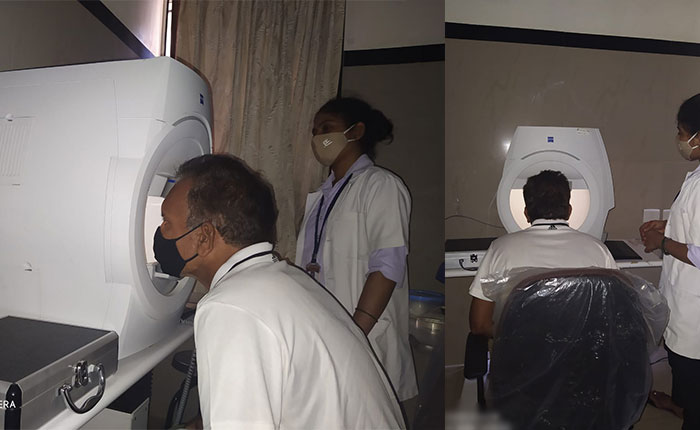Risks of Developing Glaucoma
Symptoms of Glaucoma
Vision loss begins on the outer edge (or peripheral vision) first and gradually works inwards, worsening over time. It’s often linked to a buildup of pressure inside your eye. The symptoms may be apparent only as the disease progresses.
Progressive stages of glaucoma may have the following symptoms:
- Loss of vision or blurred vision
- Halo around lights
- Persistent headaches or migraines
- Eye redness and inflammation
- Intense eye pain
- Early presbyopia
Types of Glaucoma
There are four main types of glaucoma:
- Primary Open-Angle Glaucoma: The most common type, developing slowly with no early symptoms. It results from increased eye pressure due to fluid issues, leading to gradual loss of peripheral vision.
- Closed-Angle Glaucoma: Develops suddenly due to blocked drainage channels, causing a rapid rise in eye pressure. Symptoms include nausea, vomiting, and severe eye pain, requiring immediate medical attention.
- Normal-Tension Glaucoma: Occurs despite normal eye pressure, potentially from a damaged optic nerve or low blood pressure. Symptoms are subtle in early stages.
- Congenital Glaucoma: Rare, affecting infants with visible symptoms like cloudy eyes and light sensitivity. Early diagnosis and treatment are crucial.
Regular eye exams and tests like tonometry, visual field tests, and imaging help in diagnosing and managing glaucoma. Prasad Netralaya Eye Hospital offers advanced technology for accurate diagnosis and treatment.
A routine eye test at the ophthalmologist may help in the early diagnosis of glaucoma. A glaucoma specialist will thoroughly analyze the patient’s medical history and conduct a comprehensive eye examination.
The following quick and pain-free tests may be further required to assess if the patient has developed glaucoma:
- Tonometry or measuring the intraocular fluid pressure (IOP)
- Looking for optic nerve damage by dilating and imaging it
- Visual field test (perimetry) to measure peripheral vision or check blind spots in the eye
- Pachymetry test performed to determine corneal thickness
- Gonioscopy for examining the drainage angle of the anterior chamber (front of the eye)
- Nerve Fibre ( RNFL) Scanning to check for loss of the nerve fibres
Prasad Netralaya Eye Hospital has the most technologically advanced equipment, such as an applanation tonometer, ultrasonic pachymeter, and more, that helps our glaucoma specialists investigate the depth of the disease and suggest the most suitable mode of treatment.

